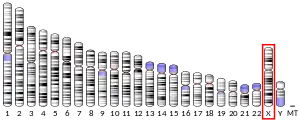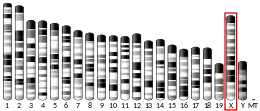| RTL3 | |||||||||||||||||||||||||||||||||||||||||||||||||||
|---|---|---|---|---|---|---|---|---|---|---|---|---|---|---|---|---|---|---|---|---|---|---|---|---|---|---|---|---|---|---|---|---|---|---|---|---|---|---|---|---|---|---|---|---|---|---|---|---|---|---|---|
| Identifiers | |||||||||||||||||||||||||||||||||||||||||||||||||||
| Aliases | RTL3, Mar3, Mart3, ZHC5, ZCCHC5, zinc finger CCHC-type containing 5, SIRH9, retrotransposon Gag like 3 | ||||||||||||||||||||||||||||||||||||||||||||||||||
| External IDs | MGI: 2685221 HomoloGene: 19397 GeneCards: RTL3 | ||||||||||||||||||||||||||||||||||||||||||||||||||
| |||||||||||||||||||||||||||||||||||||||||||||||||||
| |||||||||||||||||||||||||||||||||||||||||||||||||||
| |||||||||||||||||||||||||||||||||||||||||||||||||||
| |||||||||||||||||||||||||||||||||||||||||||||||||||
| Wikidata | |||||||||||||||||||||||||||||||||||||||||||||||||||
| |||||||||||||||||||||||||||||||||||||||||||||||||||
Retrotransposon Gag like 3 is a protein that in humans is encoded by the RTL3 gene. [5]
Function
This gene is a member of a family of gag-related retrotransposon genes. These genes appear to have lost the ability to retrotranspose; however, their open reading frames have remained intact, which may indicate that these genes have acquired new functions in the cell. Retrotransposon gag-like-3 (RTL3/ZCCHC5/MART3) is one of eleven Sushi-like neogenes identified in the human genome7 RTL3 encodes a 53 kDa protein with a nucleic acid-binding domain (CX2CX4HX4C), gag-like region within the open reading frame and an ssDNA/RNA-binding homeobox-associated leucine zipper motif.[6] It has been reported that RTL3 and SOX-9 co-regulate the expression of COL2A1 in chondrocytes.[6]
References
- 1 2 3 GRCh38: Ensembl release 89: ENSG00000179300 - Ensembl, May 2017
- 1 2 3 GRCm38: Ensembl release 89: ENSMUSG00000047686 - Ensembl, May 2017
- ↑ "Human PubMed Reference:". National Center for Biotechnology Information, U.S. National Library of Medicine.
- ↑ "Mouse PubMed Reference:". National Center for Biotechnology Information, U.S. National Library of Medicine.
- ↑ "Entrez Gene: Retrotransposon Gag like 3". Retrieved 2017-09-18.
- 1 2 Ball HC, Ansari MY, Ahmad N, Novak K, Haqqi TM (November 2021). "A retrotransposon gag-like-3 gene RTL3 and SOX-9 co-regulate the expression of COL2A1 in chondrocytes". Connective Tissue Research. 62 (6): 615–628. doi:10.1080/03008207.2020.1828380. PMC 8404968. PMID 33043724.
This article incorporates text from the United States National Library of Medicine, which is in the public domain.



